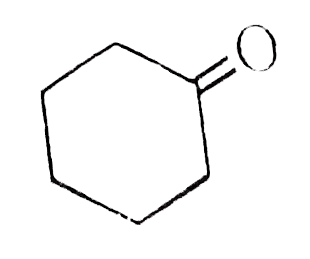The addition of halogen to an alkene involves the formation of
carbocation as the intermediate
carbanion as the intermediate
free radical as the intermediate
halonium ion as the intermediate
The correct Answer is:D
Halogenation process proceeds via following mechanism forming halonium ion as intermediate.

Topper's Solved these Questions
- HYDROCARBONSBOOK - BITSAT GUIDECHAPTER - HYDROCARBONSEXERCISE - BITSAT Archives
19 Videos
- HALOGEN DERIVATIVES OF HYDROCARBONBOOK - BITSAT GUIDECHAPTER - HALOGEN DERIVATIVES OF HYDROCARBONEXERCISE - BITST Archives
10 Videos
- METALLURGYBOOK - BITSAT GUIDECHAPTER - METALLURGYEXERCISE - Bitsat Archives
6 Videos
Similar Questions
Knowledge Check
Alkenes undergo electrophilic addition reactions. Electrophilic addition to unsymmetrical alkenes involve the formation of a more stable carbocation intermediate in the first step which is rate determining and carbocation is then attacked by a nuclephile to form product
Which one of the following alkene reacts most readily with HCI?ACH2=CH−ClBCH2=CH−O−CH3CCH3−CH=CH−CH3D
Alkenes undergo electrophilic addition reactions. Electrophilic addition to unsymmetrical alkenes involve the formation of a more stable carbocation intermediate in the first step which is rate determining and carbocation is then attacked by a nuclephile to form product
 +H2OH2SO4−−−→ ProductAThe major product is
+H2OH2SO4−−−→ ProductAThe major product is BThe major product is
BThe major product is CMajor product give +ve Tollen's testDMajor product give +ve iodoform test
CMajor product give +ve Tollen's testDMajor product give +ve iodoform testBack bonding involves the formation of
AσbondBCoordinate bondCπ bondDNone of these.
Addition Of Halogen Acid
View SolutionKreb's cycle involves the formation of
View SolutionAlkenes undergo electrophilic addition reactions. Electrophilic addition to unsymmetrical alkenes involve the formation of a more stable carbocation intermediate in the first step which is rate determining and carbocation is then attacked by a nuclephile to form product
HO−CH2−CH2−CH2−CH=CH2I2−−−−−→NaHCO3 major product formed is
View SolutionThe carbon-carbon double bond the carbon-carbon double bond in a molecule is capable of decolorizing Br2/CCl4 following free radical mechanism. The decolorization of Br2/water solution however shows electrophilic addition. The addition of bromine to cyclopentene provides evidence for bromonium ion immediate in bromine addition. it follows ionic mechanism. when cyclopentene reacts with bromine in presence of CCl4 anti addition occurs and gives trans-isomer so addition of halogen to an alkene is a stereospecific reaction. Cis-alkene on addition with halogen gives meso products and trans alkene on addition gives racemic mixture.
Q Trans-2-butene on reacting with Br2 in CCl4 forms mainly
View SolutionAddition of halogen to alkenes is predominantly
View Solution
